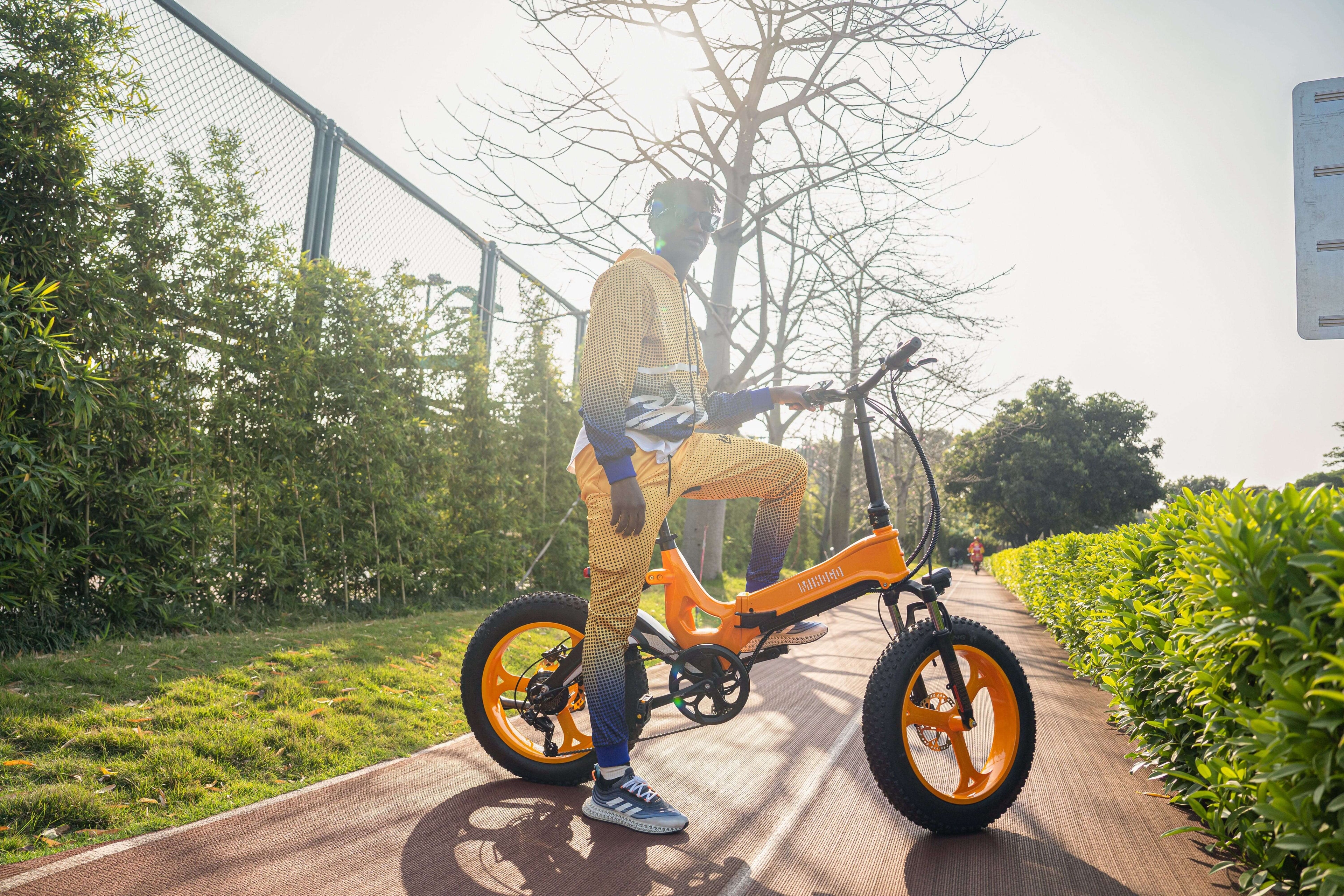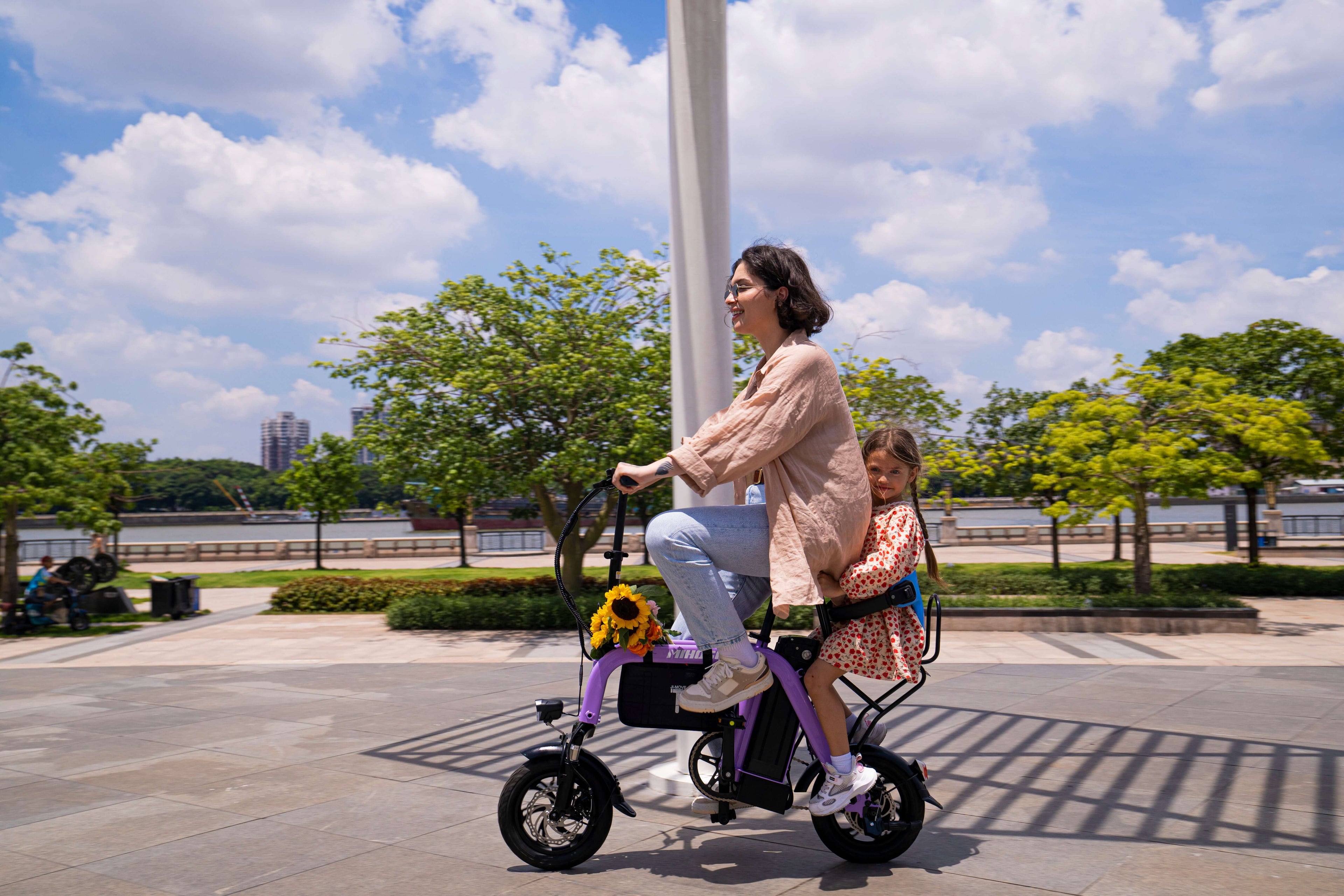Understanding E-Bike Motor Types: The Foundation of Your Decision
When selecting an electric bicycle, motor type significantly impacts performance, handling, and overall ride quality. The two primary categories dominate today's market: hub motors and mid-drive motors.
Hub Motors: Simplicity Meets Reliability
Hub motors, positioned in either the front or rear wheel, offer straightforward operation and maintenance. The hub motors segment is projected to register the highest CAGR during the forecast period, driven by increased performance efficiency and growing e-bike sales globally.
Advantages of Hub Motor Systems:
- Lower maintenance requirements
- Quieter operation in most conditions
- Cost-effective manufacturing and replacement
- Instant power delivery
- Excellent for flat terrain and city commuting
Rear Hub vs Front Hub Considerations:
- Rear hub motors provide better traction and natural feel
- Front hub motors offer all-wheel-drive sensation when pedaling
- Weight distribution affects handling characteristics
Mid-Drive Motors: Performance and Efficiency Combined
Mid-mounted motors, such as those gaining popularity in 2025, provide better balance and improved performance on varying terrains. These motors integrate with your bike's drivetrain, leveraging existing gears for optimal power delivery.
Mid-Drive Motor Benefits:
- Superior hill-climbing capability
- Better weight distribution and handling
- Efficient power usage across all terrains
- Natural cycling feel with gear integration
- Enhanced range through mechanical advantage
Power Output: Finding Your Sweet Spot
Wattage Classifications and Legal Considerations
Based on power output, the e-bike market segments into three categories: below 250W, 250W–750W, and more than 750W. The 250W–750W segment is projected to register the highest CAGR, driven by increasing adoption in emerging economies and favorable regulations.
Power Requirements by Riding Style:
- 250W-350W: Perfect for flat commuting and recreational riding
- 500W-750W: Ideal for hills, cargo hauling, and versatile terrain
- Above 750W: Specialized applications and off-road adventures
Torque: The Real Measure of Climbing Power
Expressed in Newton metres (Nm), torque determines how vigorously the motor propels you forward on trails and steep inclines. Modern e-bike motors in 2025 deliver impressive torque figures:
- Entry-level: 40-50 Nm suitable for casual riding
- Mid-range: 60-80 Nm for most riding conditions
- High-performance: 85+ Nm for challenging terrain and cargo applications
Motor Positioning: Impact on Ride Quality
Center of Gravity Considerations
Motor placement dramatically affects your e-bike's handling characteristics. Mid-mounted motors create optimal weight distribution, while hub motors shift weight to the wheels, affecting stability and maneuverability.
Maintenance Accessibility
Consider long-term maintenance when choosing motor position. Hub motors typically require wheel removal for service, while mid-drive motors may need specialized tools but offer easier access to drive components.
Smart Motor Features: The 2025 Advantage
Intelligent Power Management
The rise of smart eBikes for 2025 means riders experience more integrated motor control systems. Advanced features include:
- Adaptive power delivery based on terrain analysis
- Regenerative braking for extended battery life
- App connectivity for motor performance monitoring
- Anti-theft tracking with motor lockout capabilities
Sensor Technology Evolution
Modern e-bike motors utilize sophisticated sensor systems:
Torque Sensors:
- Measure pedaling force for proportional assistance
- Provide natural, responsive power delivery
- Offer superior efficiency and range
Cadence Sensors:
- Monitor pedaling speed for consistent assistance
- More affordable than torque sensor systems
- Suitable for casual riding and commuting
Motor Efficiency and Range Considerations
Battery Integration and Power Management
With some top eBikes for 2025 expected to exceed 100 miles per charge, motor efficiency becomes crucial. Consider how different motors affect your battery consumption:
- High-efficiency motors (85%+ efficiency) maximize range
- Smart power management optimizes consumption patterns
- Motor-battery compatibility ensures optimal performance
Climate and Terrain Impact
Your local riding conditions should influence motor selection:
Urban Commuting:
- Prioritize quiet operation and efficiency
- Consider mid-range torque for moderate hills
- Focus on reliability and low maintenance
Mountain and Off-Road:
- Maximum torque for steep climbs
- Robust construction for harsh conditions
- Advanced cooling systems for sustained performance
Noise Levels: The Often-Overlooked Factor
If you value a near-silent experience, motor noise becomes a critical consideration. Based on 2025 comparisons:
Quietest Options:
- Premium mid-drive systems with advanced engineering
- Well-designed hub motors with quality bearings
- Motors with dedicated noise reduction technology
Performance vs. Noise Balance: Consider your priorities – maximum power often comes with increased noise levels, while ultra-quiet motors may sacrifice some performance capability.
Future-Proofing Your Motor Choice
Emerging Technologies
As we advance through 2025, several motor innovations are reshaping the landscape:
- AI-powered motor tuning for optimized performance
- Solid-state battery integration for enhanced efficiency
- Vehicle-to-everything connectivity for smart infrastructure interaction
Service and Support Networks
Choose motors with established service networks and readily available replacement parts. Consider manufacturer warranty coverage and local dealer support when making your decision.
Making Your Final Decision: A Practical Framework
Step 1: Define Your Primary Use Case
- Daily commuting distance and terrain
- Recreational riding preferences
- Cargo or passenger carrying needs
Step 2: Assess Your Physical Requirements
- Desired assistance level and pedaling preference
- Hill climbing requirements in your area
- Preferred ride feel and handling characteristics
Step 3: Consider Long-term Factors
- Maintenance accessibility and costs
- Upgrade potential and compatibility
- Resale value and market support
Step 4: Test and Compare
- Experience different motor types firsthand
- Evaluate noise levels in real-world conditions
- Assess integration with your preferred e-bike features
Regional Considerations and Regulations
Legal Compliance by Location
Motor selection must comply with local e-bike classifications:
- Class 1: 750W maximum, pedal-assist only, 20 mph limit
- Class 2: 750W maximum, throttle permitted, 20 mph limit
- Class 3: 750W maximum, pedal-assist only, 28 mph limit
Infrastructure Compatibility
Consider your local cycling infrastructure when choosing motor power and type. Some bike paths restrict certain motor configurations, affecting where you can legally ride.
Conclusion: Your Perfect Motor Match
Choosing the perfect e-bike motor requires balancing power needs, riding style, efficiency requirements, and practical considerations. The 2025 market offers unprecedented options, from ultra-quiet hub motors perfect for city commuting to high-torque mid-drive systems ready for any adventure.
Remember that the best motor is one that matches your specific needs and riding conditions. Whether you prioritize whisper-quiet operation, maximum climbing power, or long-range efficiency, understanding these key factors ensures your next e-bike delivers exactly the performance you desire.
For more detailed guidance on specific motor applications, explore our e-bike performance optimization section, where we dive deeper into maximizing your electric bicycle's capabilities.








